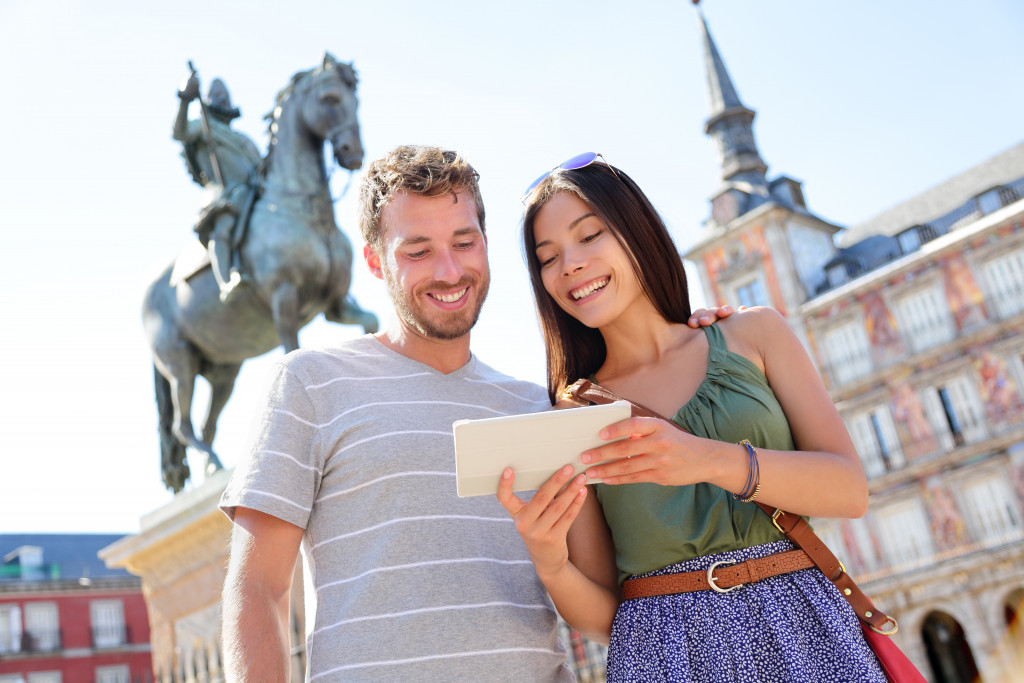What tourist hasn’t come home bringing back a souvenir or two, if not a suitcase full of travel memorabilia? Our reasons for acquiring such goods may vary as much as the items themselves or the purpose of the journey associated with them. But long after the trip has ended, we treasure these artifacts. They can give us a feeling of enrichment just by remaining among our possessions.
Buying souvenirs might be an impulse decision, or a collecting hobby, or something more personal. No matter the immediate motivation, these things are always capable of making a meaningful contribution to your never-ending narrative journey.
A history of souvenirs
People have been traveling the world for centuries, but for most of that time, the safety of our journeys was far from assured. News traveled slowly, and information could be unreliable. You’d risk being beset by highwaymen or assailed by inclement weather on bad roads without refuge. An area you’d be passing through might be experiencing political or economic instability, driving up costs.
Given those considerations, it’s impressive that historical travelers nonetheless bothered to squeeze various artifacts and trinkets acquired on their journeys into their packs and onto ships or beasts of burden.
Travel in the ancient world was at least partly an act of faith. So it’s no surprise that perhaps the first souvenirs were religious in nature. Early Christian pilgrims to Rome tended to bring back pieces of sacred sites with them, which encouraged the manufacture of keepsakes to satisfy demand (and prevent degradation of holy places).
The Roman Empire was a stabilizing force, maintaining the safety and integrity of roads. With its decline, travel became more dangerous, an enterprise mostly reserved for professional traders or the elite, who could afford armed guards and comfortable transportation. Still, these travelers persisted in collecting objects, as exemplified by the ‘Wunderkammer’ or cabinet of curiosities, where nobles and scholars would exhibit foreign marvels for social and intellectual discourse.
Tourism in the modern sense didn’t really begin until the Industrial Revolution, around which time the term was also coined. Technological improvements made swift and safe transportation, though railroads and steamboats, accessible even to working classes and women. At the same time, it also made possible the mass production of material goods, which was readily applied to the manufacture of souvenirs.

Why we buy memorabilia
In the last couple of centuries since then, the way we travel has changed in form (with airplanes, cruise ships, and high-speed trains), but not in substance. A tourist remains, essentially, someone who makes a circular journey. They set out for a destination with the implicit intention of returning home.
We also continue to acquire assorted artifacts from our travels. And the reasons vary but still fall along mostly the same lines. Pilgrims continue to buy religious memorabilia for their spiritual associations. Collecting items is a popular hobby, and your collection might begin with postcards, unused stamps, and leftover coinage before moving on to fine art objects from different cultures.
But sometimes, you want authenticity. In the digital age, you can go online and order many things from another country, from trinkets to more functional items like clothing. Yet it still doesn’t feel the same as wearing that handcrafted dress you bought from an artisan gift shop on your last trip. It matters that you went to a place physically and got something that was made locally.
Reinforcing your narrative
This underlying motivation is all about your personal narrative. Unlike other travelers, such as migrants or business travelers, tourists journey in search of novel experiences. Otherwise, why not just stay at home and experience other countries through websites, documentaries, or social media?
And when you undertake that sort of journey, it has the potential to really enrich your life. You take in the sights and sounds of a foreign place and begin to observe what makes it special. You wonder how that affects the people who live there, and maybe understand better why they might live differently.
In turn, these things have the potential to make you reflect on your experiences and relationships. Maybe you develop the skill of empathy or learn to slow down and focus on what matters. Tourism might take you on a circular route, but you can come back a changed person.
Yet coming back to the daily grind can also bring you back to normal. Thus, our travel memorabilia serve to reinforce the changes we’ve undergone. In unassuming, everyday ways, they renew that connection to our journeys out of the ordinary. Think about that the next time you’re on a trip and looking to buy a souvenir, or when you’re at home letting your gaze wander over the items you’ve collected. Your narrative keeps on writing itself, but these objects help anchor you to its key moments.





